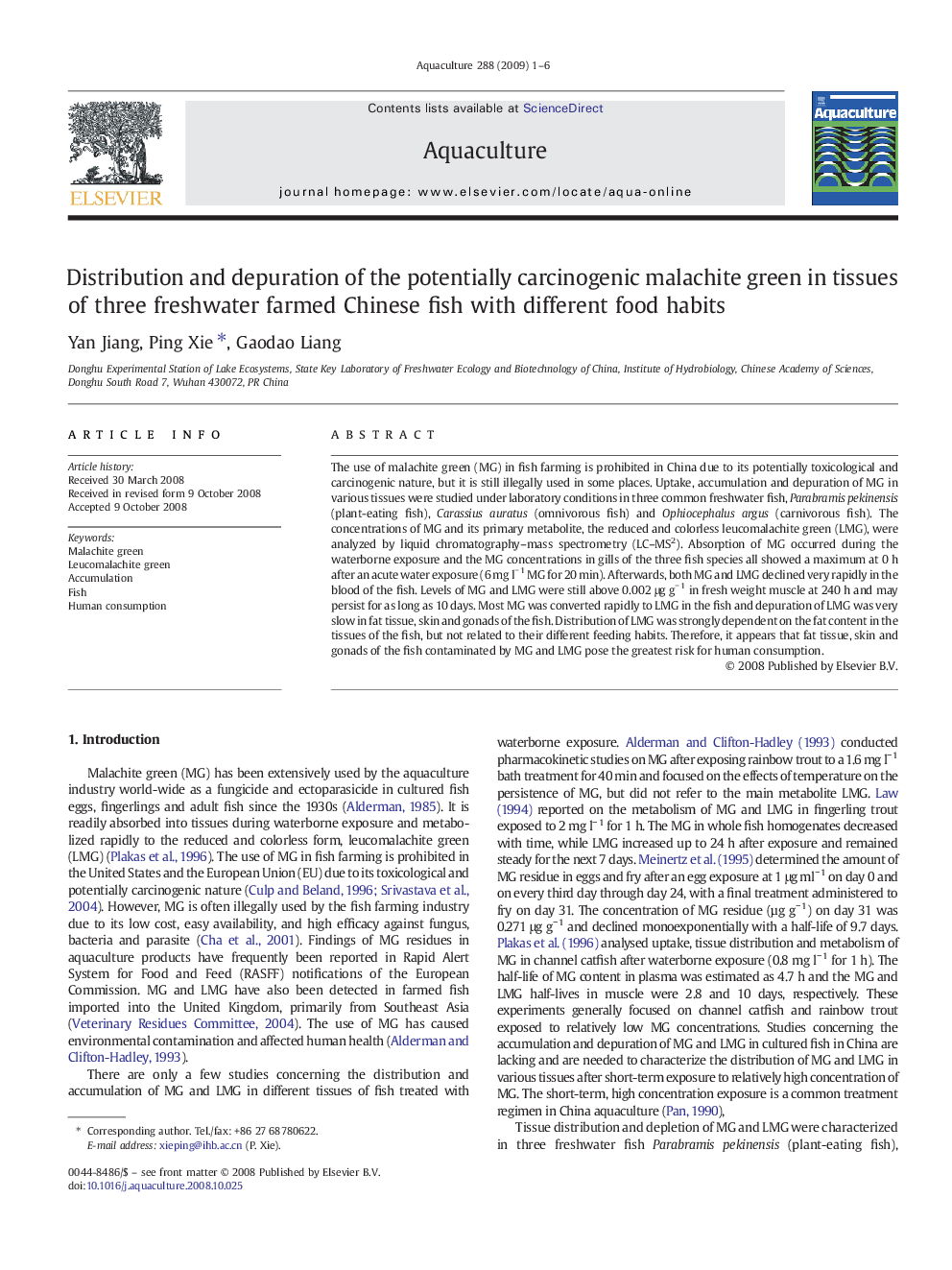| Article ID | Journal | Published Year | Pages | File Type |
|---|---|---|---|---|
| 2424156 | Aquaculture | 2009 | 6 Pages |
The use of malachite green (MG) in fish farming is prohibited in China due to its potentially toxicological and carcinogenic nature, but it is still illegally used in some places. Uptake, accumulation and depuration of MG in various tissues were studied under laboratory conditions in three common freshwater fish, Parabramispekinensis (plant-eating fish), Carassiusauratus (omnivorous fish) and Ophiocephalusargus (carnivorous fish). The concentrations of MG and its primary metabolite, the reduced and colorless leucomalachite green (LMG), were analyzed by liquid chromatography–mass spectrometry (LC–MS2). Absorption of MG occurred during the waterborne exposure and the MG concentrations in gills of the three fish species all showed a maximum at 0 h after an acute water exposure (6 mg l− 1 MG for 20 min). Afterwards, both MG and LMG declined very rapidly in the blood of the fish. Levels of MG and LMG were still above 0.002 μg g− 1 in fresh weight muscle at 240 h and may persist for as long as 10 days. Most MG was converted rapidly to LMG in the fish and depuration of LMG was very slow in fat tissue, skin and gonads of the fish. Distribution of LMG was strongly dependent on the fat content in the tissues of the fish, but not related to their different feeding habits. Therefore, it appears that fat tissue, skin and gonads of the fish contaminated by MG and LMG pose the greatest risk for human consumption.
